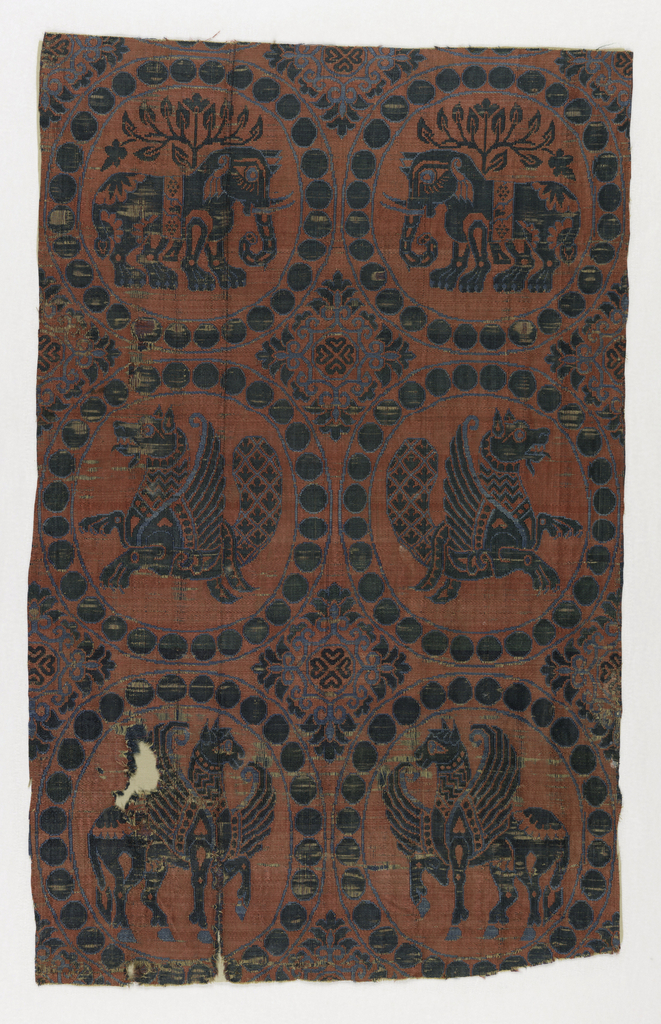This Spanish silk, decorated with exotic and imaginary animals in pearled roundels, was most likely woven by Islamic craftspeople in 11th or 12th-century Spain. The roundels are bilaterally symmetrical and depict, from the top down, elephants, senmurvs (composite creatures with dog heads, lion paws, peacock tails, and wings), and winged horses. Patterns, like the zigzag motif on the horses’ manes, function to distinguish individual features.
The weaver of this textile was clearly influenced by the art of the Sasanian Empire, which had ruled Persia 400 years earlier. The creatures allude to figures in the texts of the state religion, Zoroastrianism, and the design appears to have been inspired by Sasanian coins and silver plates, which feature similar creatures. In the Christian European context, textiles such as these were most often found in the tombs of saints and royalty.
